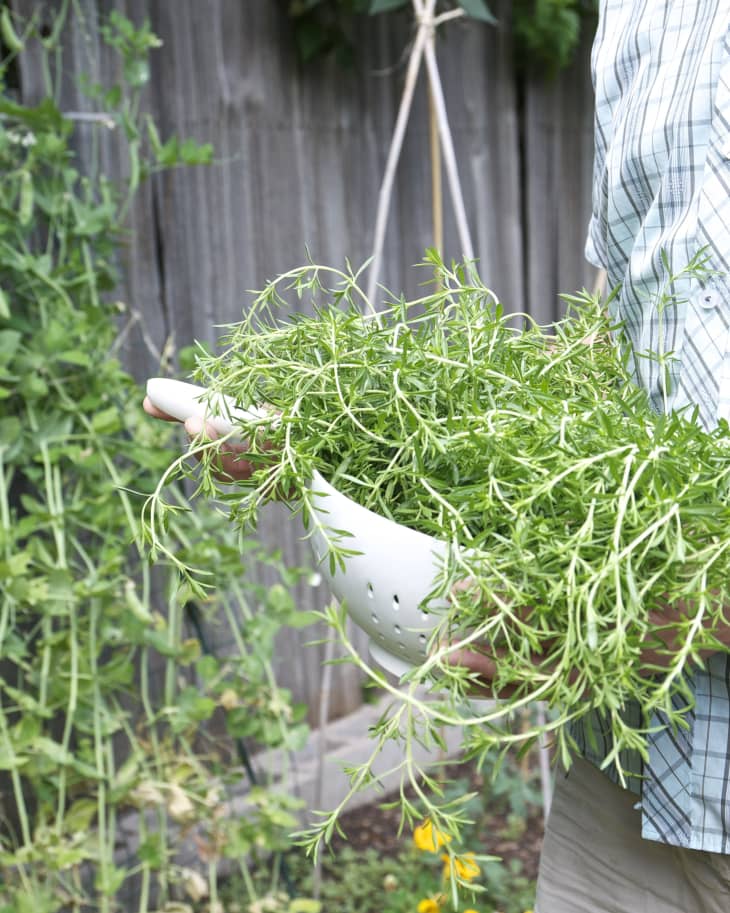Everything You Need to Know About Growing Thyme
Thyme is such a big part of what summer smells like for me. Ornamental versions thrive and spread among the paving stones on my garden path, and the fragrant aroma is present with every step. Culinary versions, like French and lemon thyme, also dot my herb garden and grace my annual dried herb blend.
From classic Italian seasoning to herbs de Provence to a bouquet garni, thyme contributes a subtle, savory note that complements so many of my slow-simmered soups, stews, and roasted dishes. Since thyme doesn’t need much extra care in order to enjoy year after year, learn how to grow this perennial herb and everything from planting, cultivating, and harvesting it.
Why Should I Grow Thyme?
Imagine a symphony. There are the loud, in-the-spotlight players, like the trumpet or the violin, and then there are the supporting instruments. In a dish, garden thyme (thymus) is that supporting role, like a clarinet or oboe, that provides the rich backbone, against which the spotlight players shine.
The first thing to consider when purchasing or planting thyme is that there are two main types of thyme: ornamental and culinary. Thyme is a broad category, and most of the varieties are ornamental. The three most common types of culinary thyme are French, lemon, and caraway.
Is Thyme a Perennial or Annual?
Culinary thyme is a hardy perennial that is evergreen in most gardening zones. It is drought-tolerant and pollinator-friendly. I have harvested thyme well into December, here in Colorado; although, I experience the best flavor in the summer months. If you grow your thyme in a container, feel free to leave it outside and let it enter a dormant state over winter. New leaves will emerge within the early spring.
How to Plant Thyme
- Where: Thyme is another culinary herb that makes bringing fresh flavor to the kitchen an easy process. It thrives in hot conditions, loves full-sun, and doesn’t need constant watering or attention. Plant thyme in both containers and within the garden. I like to plant mine near my rosemary, as their needs are nearly identical. I even let a couple of my thyme plants flower, because the bees love it so much.
- When: Like mint, thyme can prove challenging to start from seed. I’ve found the best results from either propagating from cuttings or by layering. I have purchased only three thyme plants from the garden center, and by means of cuttings, I now have thyme all throughout my garden. Regardless of which propagation method you choose, plant young thyme plants only after the ground temperature reaches 70°F, about 2 to 3 weeks before the last frost.
Propagate from cuttings: Clip a three-inch cutting from the very tip of a stem, apply rooting hormone on the exposed portion of the stem, and plant it in either sterile sand or vermiculite. Roots will emerge within about six weeks. Transfer to a small pot, let the root ball form, and then transfer to a large pot or directly to your garden.
Propagate by layering: Take a long thyme stem and carefully secure it along the soil with wire or a U-shaped stake, leaving four inches of the tip free. Make sure the pinned portion is directly touching the soil. Roots will start to form along the stem within about a month. Cut away the newly rooted plant from the main plant and transfer elsewhere within the garden or to a large pot.
How to Cultivate Thyme
- Soil: Plant thyme in well-drained soil with an optimal pH between 6.0 and 8.0. In early spring, you may fertilize with organic matter, like compost, but not much soil amendment is necessary.
- Sun: Thyme needs a growing area with plenty of sunlight. Indoors, find a sunny window for your thyme. In the garden, intersperse among other drought-tolerant perennials in an area that receives full sun.
- Water: Most varieties of thyme are drought-resistant, so only give a thorough watering, when the soil is completely dry.
- Spacing: Thyme is a vigorous grower, so be sure to space accordingly. Plant anywhere from 12 to 24 inches apart, depending upon the specific variety.
- Companion planting: Thyme thrives in sunny conditions, so if you are growing thyme in containers, plant with rosemary, which also has similar watering needs. In the garden, plant alongside strawberries, cabbages, tomatoes, eggplants, broccoli, and Brussels sprouts.
How to Harvest Thyme
Really, the more you trim your thyme, the more it grows. Cut fresh stems in the morning, leaving behind tough, woody portions. Leave behind at least five inches of growth, so that the plant can still flourish. Regular pruning not only encourages more growth, but also promotes a more rounded shape.
